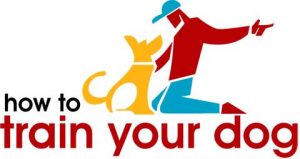Any dog owner knows that there are times when you need some outside help. You may require the services of a vet, or wonder what steps to take after a dog bite incident.
Aggressive behavior in canines is a common problem that can leave owners feeling frustrated and helpless.
In this article, we’ll explore why this needs to be addressed in dog training, so you can begin to tackle this challenge head-on.
The Impact Aggressive Behavior Has On The Dog
Aggression can greatly affect your dog’s overall quality of life. Those who display aggression are often subject to restrictions and limitations (e.g. being confined to certain areas or being constantly leashed). In turn, this can limit their ability to explore and socialize with others.
Additionally, aggressive behavior can lead to isolation for both the dog and its owner. Owners may feel embarrassed or ashamed. They then avoid taking their dogs out in public or visiting friends’ homes.
This lack of socialization can further exacerbate the problem, because dogs need regular exposure to different environments. They also require interactions with other animals and people, in order to develop proper social skills.
Moreover, living with an aggressive dog can create a constant state of stress for owners. This anxiety may lead them to become overly cautious, or fearful when interacting with their own pets. Once more, this can escalate the dog’s negative behavior.
The Impact Aggressive Behavior Has On People
Aggressive dogs put their owners, families, neighbors, and even strangers at risk. They can create tense situations in public spaces such as parks or sidewalks. This is because encounters with other people or animals are more likely. These situations can result in physical injuries or even legal consequences if an incident occurs.
In turn, this can lead to strained relationships with neighbors or community members. You may be wondering, ‘Can You Get PTSD From A Dog Attack?‘ and ‘Are some breeds more likely to cause injury and trauma than others?’ Helpfully, there are specialist websites discussing what PTSD is, and how a dog bite can cause it. You can also learn about family pet incidents, and find out whether children are at greater risk of trauma.
The Impact Aggressive Behavior Has On Other Animals
Dogs are social creatures by nature, and rely on positive interactions with their fellow canines. When one dog displays aggressive behavior towards another, it can lead to fear and anxiety among the other dogs in the vicinity.
In turn, this can disrupt peaceful social dynamics. It can also escalate into further aggression among the group, as they try to establish dominance or defend themselves.

The Dangers Of Ignoring Aggressive Behavior
Aggression is not a behavior that will simply go away on its own. In fact, it often escalates over time if not addressed. This can result in dangerous situations where the dog may bite or attack others. As we said earlier, this can lead to potential lawsuits and legal issues.
Furthermore, ignoring aggressive behavior also neglects the underlying causes of the aggression. Dogs may act this way due to fear, anxiety, territoriality, or even medical issues. By failing to address these root causes, owners are essentially allowing their dogs to suffer silently. At the same time, they’re putting themselves and others at risk.
Overlooking aggressive behavior can invite negative consequences for the dog-human bond. A canine may be constantly experiencing fear and stress, without proper intervention from its owner. In turn, it may become more anxious or reactive over time. This can strain the relationship between owner and dog, as trust erodes and communication breaks down.
By ignoring aggressive behavior in dogs, we jeopardize public safety and compromise the well-being of our loyal companions.
There Are Effective Strategies You Can Use
Desensitization and counterconditioning involve exposing the dog to the triggers of their aggression. This is done in a controlled and gradual manner, while pairing it with something positive (like treats or praise). You repeatedly expose the dog to these triggers and associate them with positive experiences. In turn, the negative association is gradually replaced with a more positive one.
Another effective strategy is implementing management techniques. For example, a dog may become aggressive when meeting new people. Here, it’s important to set up situations where encounters can be controlled. This might involve keeping the dog on a leash during introductions.
Alternatively, use baby gates and crates to limit access between the dog and the visitors. This can be maintained until they’ve become more comfortable with each other. These techniques help prevent potentially dangerous situations – while allowing for gradual socialization at a pace that suits the individual dog.
In addition, reward-based training methods can greatly contribute to addressing aggression in dogs. Don’t rely on punishment or forceful methods which may escalate aggression further. Instead, use rewards such as treats, toys, or verbal praise. This helps motivate dogs towards desired behaviors, while maintaining their trust and cooperation.
The Role Of Professional Trainers
Some may argue that any pet owner can handle their dog’s aggression. However, it’s essential to recognize the unique expertise that professional trainers possess.
These individuals have spent years studying canine behavior, and understand the intricate nuances behind aggression. They’re equipped with effective techniques and tools to modify this behavior safely. In turn, it ensures that both the dog and its owner feel confident and secure.
A professional trainer will be able to assess the underlying causes of aggression accurately. The triggers can be identified through observation and analysis. By addressing the root cause directly, they can tailor their training methods accordingly. This is instead of relying on generic approaches that may not suit a particular dog’s needs. Trainers can teach pet owners appropriate strategies, and empower them with confidence in managing aggressive behaviors independently.
Aggression can pose a danger to both the dog and those around them. This makes it crucial to address and modify these behaviors early on. The key is to work with professional trainers and implement positive reinforcement techniques. In turn, you can help your pet overcome aggressive tendencies and develop better social skills.

